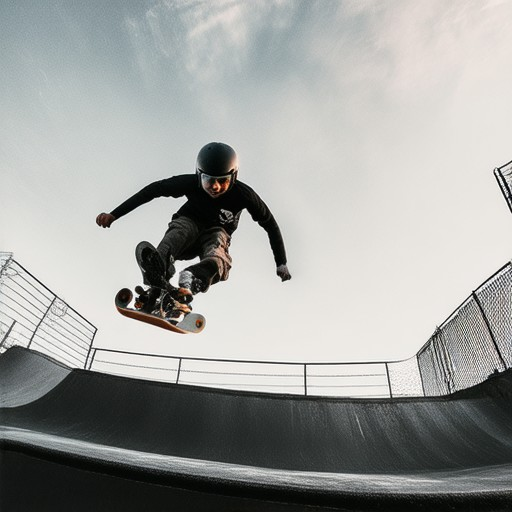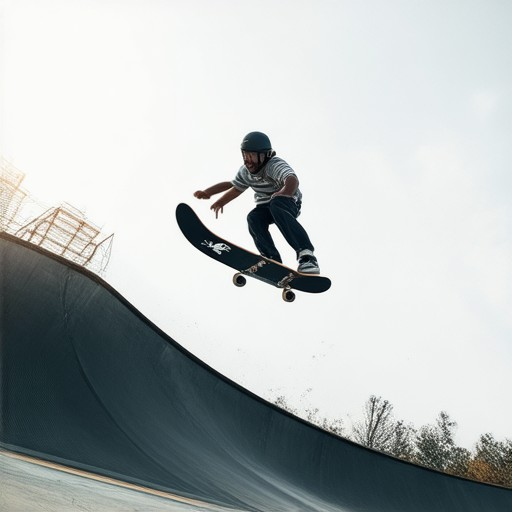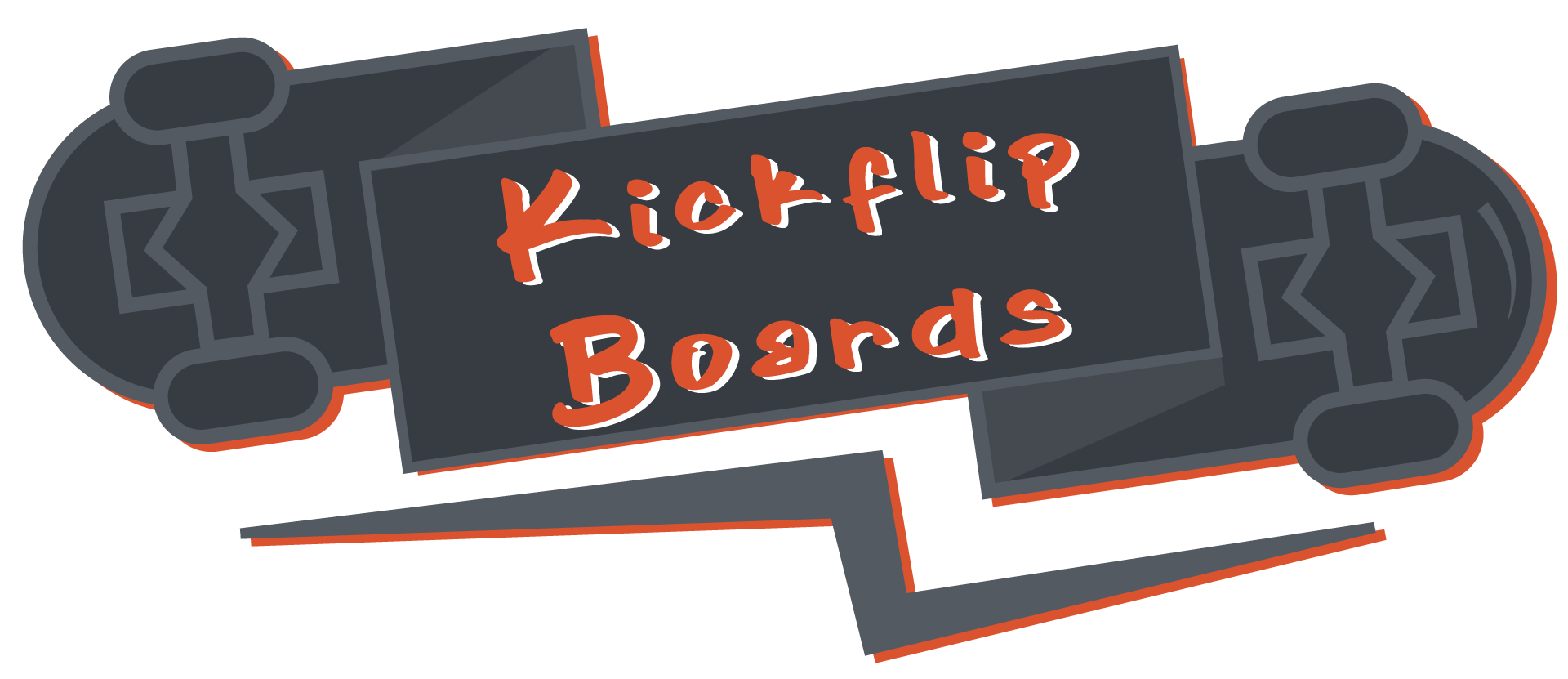Skateboarding is more than just a hobby—it’s a lifestyle that comes with its own unique set of challenges and rewards. As skaters push boundaries and explore new tricks, the importance of wearing the right protective gear cannot be overstated. Whether you’re a seasoned pro or just starting out, equipping yourself with the best skateboard protective gear is not just about style but about safety. From knee pads to helmets, the right gear can mean the difference between a memorable session and potential injuries. In this comprehensive guide, we’ll dive into the world of skateboard protective gear, exploring the essentials, the latest trends, and how to choose the perfect setup for your skating style. Whether you’re looking for pads for skateboarding, helmets, or other safety gear, this article has you covered. Stay protected, stay confident, and keep shredding the board.
Key Takeaways
– Protective Gear is Essential for Skateboarding Safety: Always wear helmets, knee pads, elbow pads, and wrist guards to minimize injuries and enhance your experience.
– Wrist Guards Offer Critical Impact Protection: They prevent wrist fractures and sprains, supporting safe landings and maneuvers.
– Elbow Pads Provide Added Security: While not mandatory, they shield against sprains and impacts, ideal for park skating and rough surfaces.
– Consider Your Skill Level and Environment: More gear is recommended for tricks or rough terrains, while casual rides may need fewer items.
– Invest in Quality and Proper Fit: durable and well-fitting gear ensures maximum protection and comfort.
– Gradual Addition as Skills Grow: Start with basics like helmets and knee pads, then add pieces as confidence and ability increase.
– Prioritize Safety for Enjoyment: Wearing the right gear allows you to stay confident and focused on the thrill of skateboarding.

What do skateboarders wear for protection?
Skateboarders wear various protective gear to minimize injuries during falls or collisions. Here’s a breakdown of the essential and optional gear:
- Helmets : Essential for protecting the head from concussions or other traumatic injuries. Most skateboarders opt for lightweight, breathable helmets designed specifically for skating.
- Shoulder Pads : Provide additional arm and shoulder protection, though they may be less commonly used than elbow pads alone.
- Elbow Pads : Protect the elbows from friction and impact, reducing the risk of road rash and minimizing discomfort after falls.
- Knee Pads : A crucial component of skateboard protection, they guard the knees against scrapes and bruises from hard landings.
- Wrist Guards : Optional but recommended for those performing tricks, they help prevent wrist fractures from awkward landings.
- Skate Shoes : Designed with reinforced toes and sturdy sole construction to enhance board grip and provide foot support.
- Baggy Clothing : Often chosen for its ability to protect against scrapes and minor injuries, along with offering weather resistance.
- Shin and Lower Leg Pads : Used to protect against impacts and muscle strains, particularly during slides or jumps.
- Neck Braces : Occasionally used for added neck protection, though not commonly seen in casual skating.
By wearing this combination of gear, skateboarders can enjoy their activity with reduced risk of injury.
Essential Safety Gear for Skateboarding
Skateboarding requires proper safety gear to ensure a safe and enjoyable experience. Here’s a breakdown of the essential items:
- Helmets : Protect your head from impacts and falls. Choose a helmet designed for skateboarding with adequate padding.
- Knee Pads : Shield your knees from scrapes and injuries during falls.
- Cushioning Shorts/Pants : Opt for lightweight, impact-absorbing clothing to reduce friction and road rash risks.
- Elbow Pads : Protect your elbows from bruises and scrapes during falls.
- Wrist Guards : Prevent wrist injuries caused by awkward landings or falls.
- Goggles/Glasses : Essential for protecting your eyes from dust, debris, and flying objects.
- Pads (Optional) : Additional padding for wrists, shins, and other vulnerable areas can offer extra protection.
Dress appropriately for skateboarding: opt for tight-fitting clothing to avoid catching in wheel wells and wear long sleeves and pants to minimize scrapes. Ensure your footwear has sturdy soles for better grip and support. Always carry essentials like a necklace for personal items and use a backpack to avoid strap tanglements.

Best Protection for Skateboarding
Skateboarding requires robust protection to minimize injuries from falls or collisions. Here’s a breakdown of essential gear and tips for maximizing safety:
- Wrist Guards : Essential for protecting your wrists during falls or impacts.
- Elbow Pads : Prevent road rash and bruises on elbows.
- Knee Pads : Provide cushioning for potential impacts on knees.
- Helmets : A critical addition for head protection, especially in crowded areas or downhill slopes.
- Mouthguards : Recommended to prevent injuries to lips and teeth in crashes.
- Gloves : Help reduce friction and abrasions on palms and fingers.
When selecting gear, opt for high-quality materials and designs suited for skateboarding. Consider brands like Kickflip Boards for durable and stylish options. Always ensure your gear fits properly to maximize effectiveness.
Regularly inspect your protective equipment for tears or wear to maintain optimal safety. Replace items as needed to avoid discomfort or inadequate coverage.
For more insights, explore NHS UK guides and Skateboard Mag for comprehensive tips and reviews on skateboarding safety.

Should I Wear Protective Gear When Skating?
Protective gear is highly recommended when skating to minimize the risk of injuries and enhance your experience. Here’s a breakdown of the essential and optional gear:
- Helmets : Essential for impact absorption during falls. Choose one that fits well and offers adequate coverage.
- Knee Pads : Protects your knees from sprains and scrapes, especially useful for grinding and trick moves.
- Elbow Pads : Shields your elbows from friction and impacts, crucial for long sessions on rough surfaces.
- Wrist Guards : Prevents wrist injuries from falls or collisions, particularly important for downhill skating.
- Clothing : Opt for lightweight, breathable gear with built-in padding. Skateboard-specific shoes offer better support and grip.
- Gloves : Optional but helpful for better grip and skin protection during high-impact maneuvers.
Consider the type of skating and environment. More gear is recommended for tricks or rough surfaces, while casual rides may require fewer items. Invest in quality gear for durability and proper fit. Gradually add pieces as your skill level grows. Prioritize safety and enjoy the ride with confidence!
Why Do Skaters Wear Wrist Guards?
Skaters wear wrist guards primarily to protect their wrists from injuries caused by falls and impacts during tricks and maneuvers. The wrist is particularly vulnerable due to its small bone structure, making it prone to fractures or dislocations during high-impact landings common in skateboarding. Wrist guards act as a splint, providing support and reducing the risk of serious injuries.
Key reasons include:
- Impact Protection : The force from jumps, grinds, and kickflips can generate significant impact, which wrist guards help absorb and distribute away from the wrist.
- Prevention of Fractures and Sprains : By stabilizing the wrist, guards prevent breaks or sprains, allowing skaters to continue riding without extended downtime for recovery.
- Recovery Assistance : Even if a minor injury occurs, wrist guards can help stabilize the area, reducing swelling and preventing further damage, enabling continued skating.
- Comfort and Functionality : While initially uncomfortable, many skaters find wrist guards adaptable to their riding style, offering protection without hindering movement significantly.
- Common Practice : Widely used among skaters, wrist guards are considered essential gear, reflecting both practicality and community norms.
Thus, wearing wrist guards is a proactive measure for injury prevention, enabling skaters to enjoy their sport safely and confidently.

Are Elbow Pads Needed for Skateboarding?
Elbow pads are not strictly required for skateboarding, but they offer significant protection against potential injuries. Here’s a breakdown of their importance and considerations:
- Protection Against Impact: Skateboarding involves quick movements and frequent falls. Elbow pads can help absorb the shock and prevent injuries like sprained elbows or fractures.
- Common Usage Among Skaters: Many experienced skateboarders choose to wear elbow pads, particularly in environments like street skating or vert ramps where impacts are more pronounced.
- Types of Skateboarding: Their necessity may vary by style. For example, they are often recommended for park skating due to higher risk of falls on uneven surfaces.
- Personal Preference: Some skaters prefer the added security, while others may feel it’s unnecessary if they are cautious and skilled enough to avoid falls.
Consider your skill level, the type of skating you engage in, and your comfort with wearing protective gear. While not mandatory, elbow pads can enhance safety and confidence on the board.




0 Comments